
Dans le cadre de mes formations à l’Agilité et après plusieurs itérations, je me suis demandé comment je pouvais faire pour parler des principes Agile sans que cela soit trop rébarbatif et ennuyant. En effet, déjà qu’en général je présentais juste avant les 4 valeurs de l’Agilité (voire les 8 demi-valeurs), enchaîner avec les 12 principes pouvait avoir tendance à assommer l’auditoire ! Je me suis alors rappelé d’Artistes et Spécifieurs, un atelier incontournable dont j’avais eu un très bon souvenir la première fois que je l’avais expérimenté.
Draw the Drawing Game de son nom original est un jeu animé par Alistair Cockburn dès la fin des années 90 dans ses formations. Il est basé sur le jeu de communication de Larry Constantine auquel il apporte une variante : 3 itérations pour permettre aux participants d’expérimenter le Reflexion Workshop et avoir la sensation de s’améliorer.
Je vous propose dans cet article de vous décrire la manière dont je l’anime aujourd’hui, ce qui peut avoir tendance à se passer et les éléments de débriefing associés aux principes Agile que j’apporte à la fin.
En vous souhaitant une excellente lecture ! 🙂
Matériel

- Des dessins pour les différents rounds, j’utilise pour ma part ce set avec :
- Round 1 : le 5 ème
- Round 2 : le 4 ème
- Round 3 : cette photo – l’idée étant d’augmenter la complexité au fur et à mesure
Note : Je trouve que d’avoir des exemplaires imprimés / plastifiés a véritablement un intérêt.
- Des feuilles A4
- Des feutres de différentes couleurs
- Tables et chaises pour le confort 😛
Optionnel : 2 salles différentes pour séparer physiquement les participants
Instructions

Structure d’équipe
Chaque équipe est composée de 2 rôles :
- Spécifieur : rédige les spécifications du projet du client
- Artiste : réalise le projet du client
Note : la taille recommandée de l’équipe est de 5 personnes avec 2 artistes et 3 spécifieurs. Maintenant ce qui importe est d’avoir au moins 2 spécifieurs dû au rôle supplémentaire de messager (cf. contraintes).
Contraintes
- Spécifieurs et Artistes sont séparés physiquement : au mieux dans des salles séparées, sinon dans des coins de la salle
Note : Je préfère de loin l’utilisation de plusieurs salles car elle permet d’enlever la pression du regard des autres personnes du groupe. Maintenant, ce n’est pas toujours possible en terme de logistique.
- Les Spécifieurs doivent écrire leurs instructions de manière littérale et linéaire aux Artistes, pas de dessin.
Note : Des participants particulièrement créatifs ont déjà écrit leurs instructions littéralement en recréant les formes du dessin, d’où l’importance du « linéaire » ! 😛
- Le seul moyen de communication autorisé entre Spécifieurs et Artistes est l’écrit. Les Spécifieurs peuvent communiquer oralement entre-eux, de même pour les Artistes.
Note : Il peut s’avérer utile de préciser que les Artistes peuvent également communiquer avec les Spécifieurs pour poser des questions, mais uniquement à l’écrit. Cependant, ils n’ont pas le droit de se déplacer (cf. contrainte suivante).
- Un Spécifieur à la fois jouera le rôle de messager entre les groupes, il peut rester observer les Artistes mais n’a pas le droit de leur parler. Il n’a pas non plus le droit de répondre directement aux Artistes (même à l’écrit), il doit d’abord revenir côté Spécifieur.
Note : Le « un seul à la fois » est optionnel. Par contre, je tiens à la contrainte qui force le messager à retourner côté Spécifieur pour répondre car c’est pour moi une manière de montrer le « coût de l’incompréhension« .
Objectif
L’équipe doit réaliser le projet du client et lui livrer le résultat au bout des 10 minutes de round.
Note : J’ai tendance à bien répéter plusieurs fois l’objectif dans le sens où le projet doit bien être livré au bout des 10 minutes.
Note : Il y aura 3 rounds de production de 10 minutes chacun. En ajoutant les phases d’échanges et de débriefing, l’atelier dure environ 1h de mon côté.
Round 1
Avant de lancer le premier Round, je sépare les Artistes des Spécifieurs dans 2 salles différentes. J’invite alors les Artistes à aller dans la seconde salle car je vais projeter le dessin à réaliser sur l’écran. L’intérêt de projeter est simplement pour se mettre d’accord sur le sens car juste avec des exemplaires format A4, il y a au moins 4 manières de voir la chose ! 😛
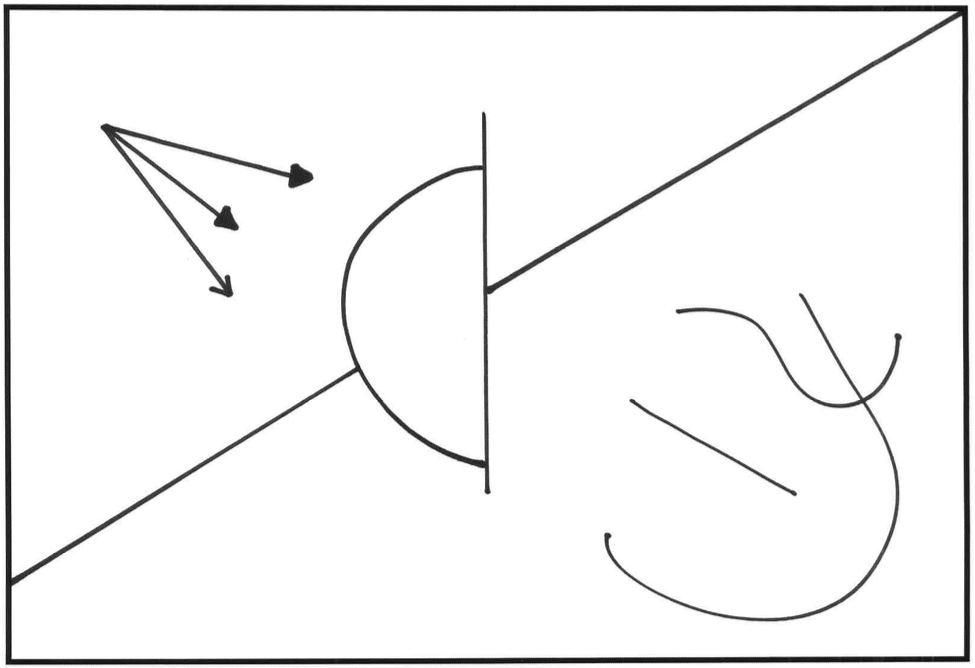
Le dessin affiché et les exemplaires distribués, je lance le chrono des 10 minutes. Je m’en vais ensuite dans la salle des Artistes en fermant bien la porte pour que les Spécifieurs ne subissent pas de pression du regard. J’en profite généralement pour discuter tranquillement avec les Artistes en attendant ! 🙂
De manière générale, les premiers Spécifieurs arrivent aux alentours des 5 minutes. On peut souvent sentir la pression chez les Artistes dont les Spécifieurs ne sont pas encore arrivés ! C’est également le moment où les Spécifieurs se rendent compte que ce qui leur apparaissait clair, ne l’est pas forcément ! 😛
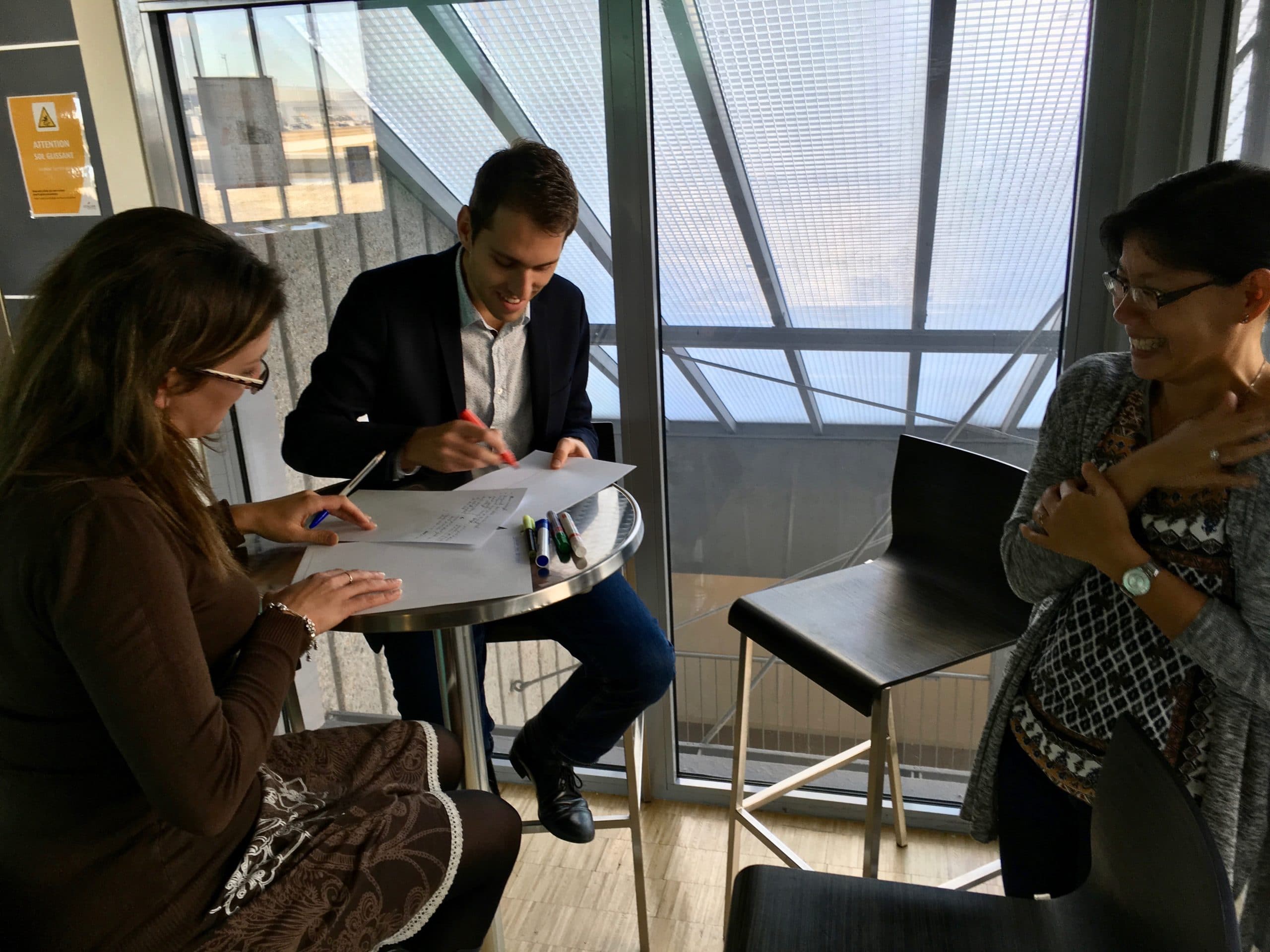
Il arrive parfois que les Spécifieurs déposent leurs instructions et s’en aillent, ce qui peut générer quelques frustrations côté Artiste :
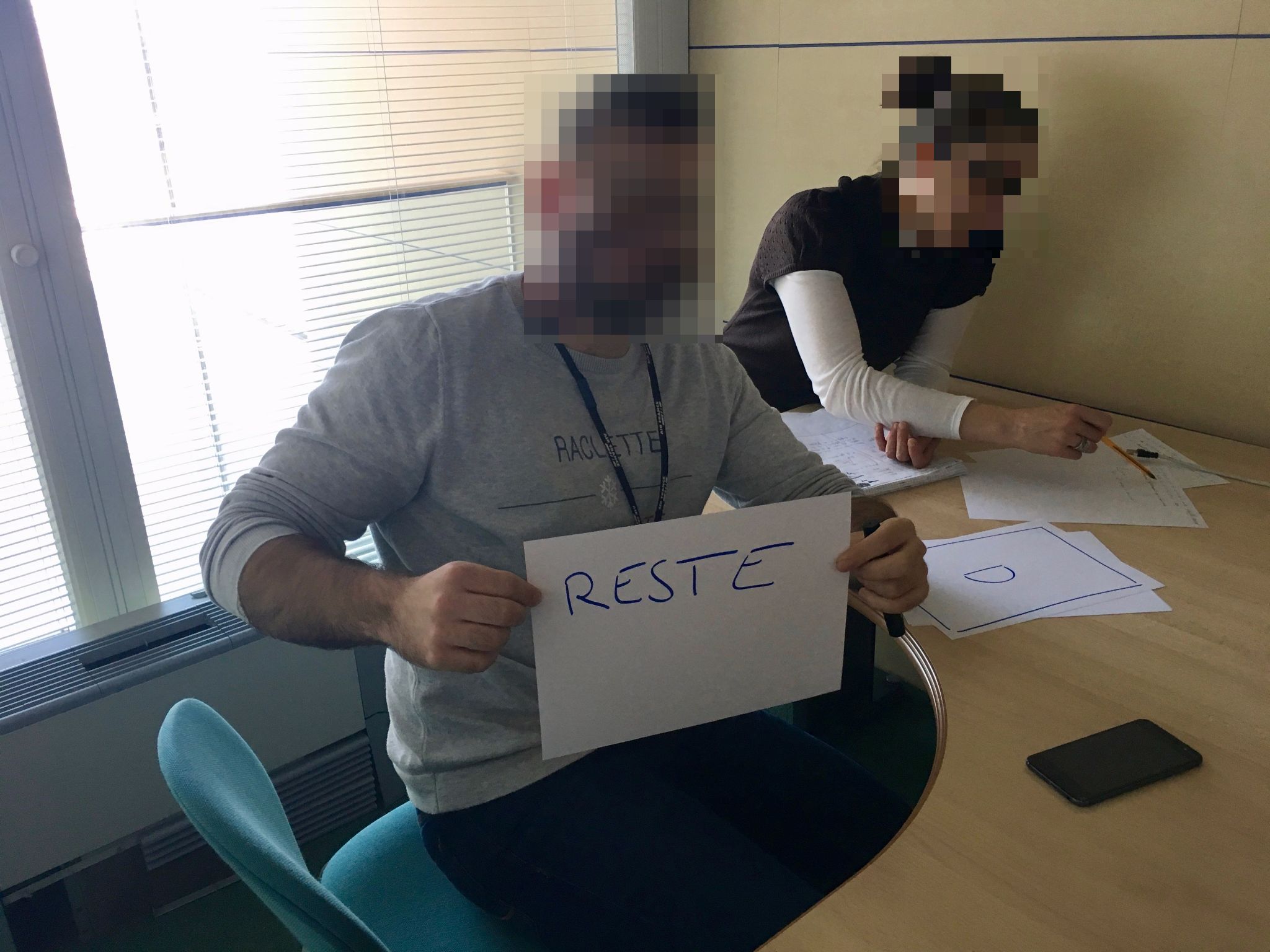
Note : Si après 7-8 minutes personne n’est venu, je retourne alors rappeler aux Spécifieurs que le produit doit être livré au client au bout des 10 minutes afin de les faire bouger. Cela génère souvent un mouvement de panique et des remarques du type : « Mais on croyait que c’était juste pour la spécification les 10 minutes ! ». Il est intéressant de voir que l’on entend / comprend souvent ce que l’on veut ! 😛
Dans ce cas, les Artistes reçoivent généralement une quantité importante d’informations avec très peu de temps pour les traiter. Pour marquer encore plus la fin du temps approchant, j’ai tendance à faire le décompte des 10 dernières secondes près des Artistes ce qui peut entrainer des comportements intéressants : est-ce que je m’arrête avec ce que j’ai ou est-ce que je tente un coup de bluff en espérant que ça passe ?
Voici quelques résultats obtenus :
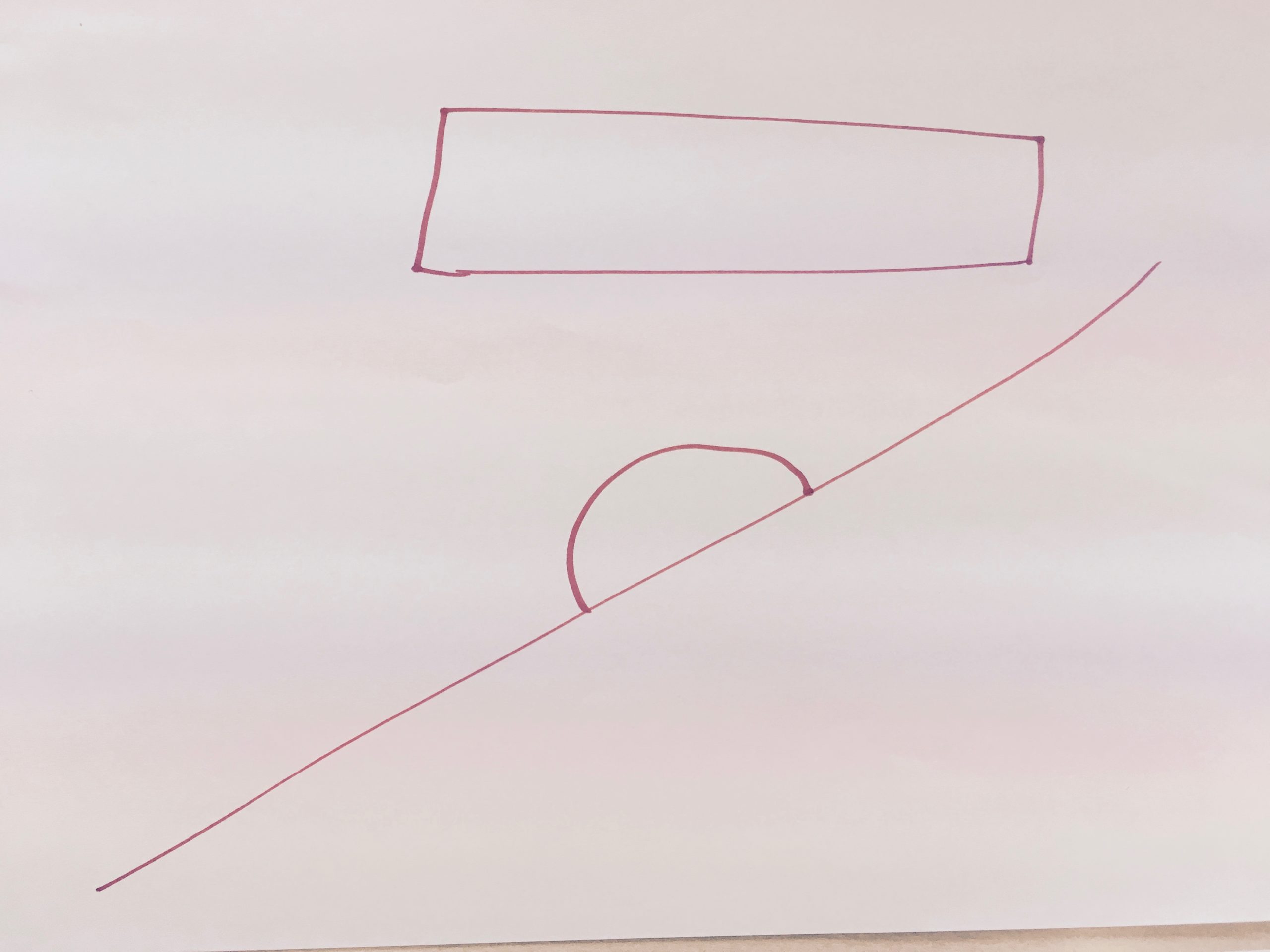
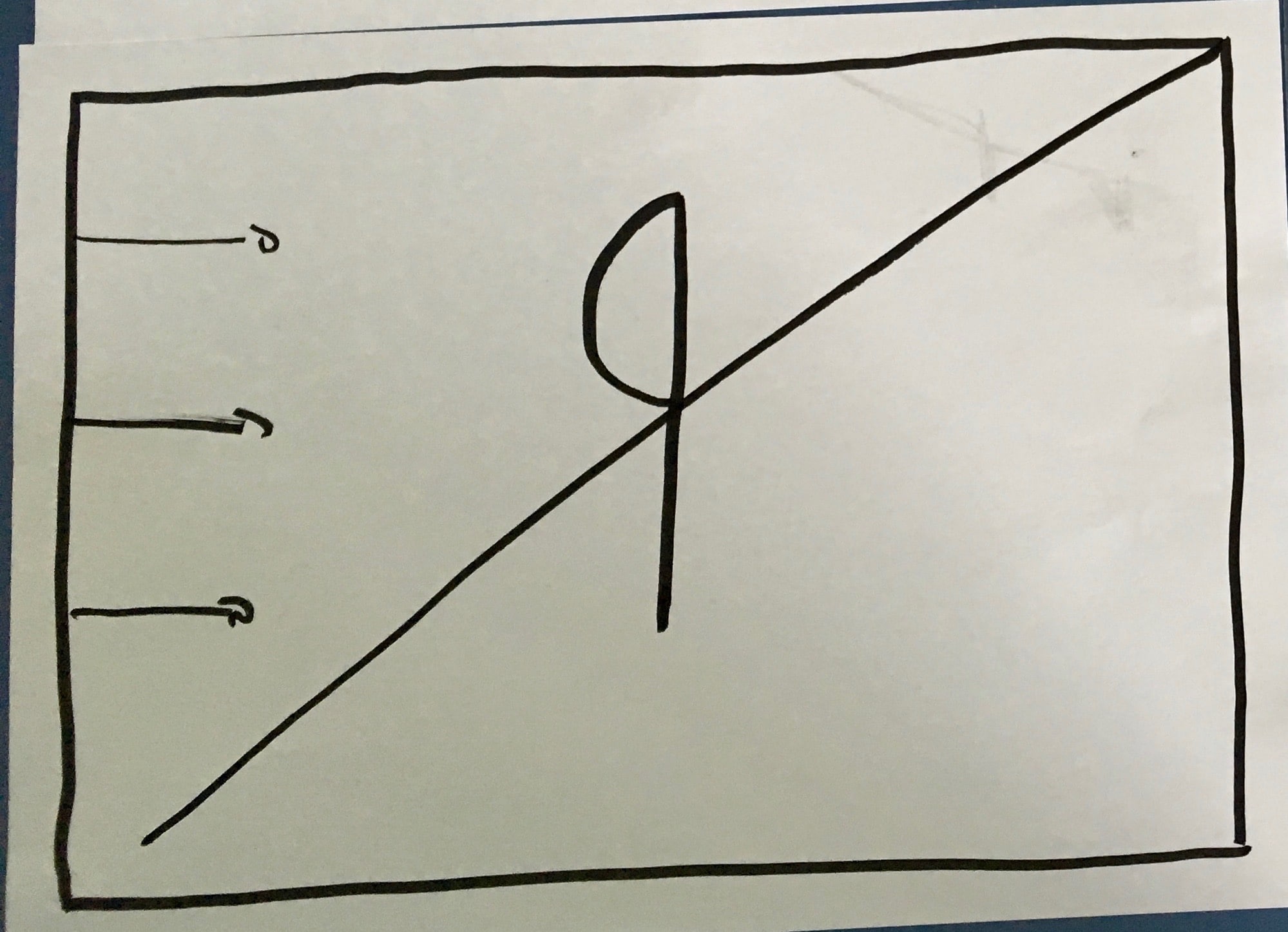
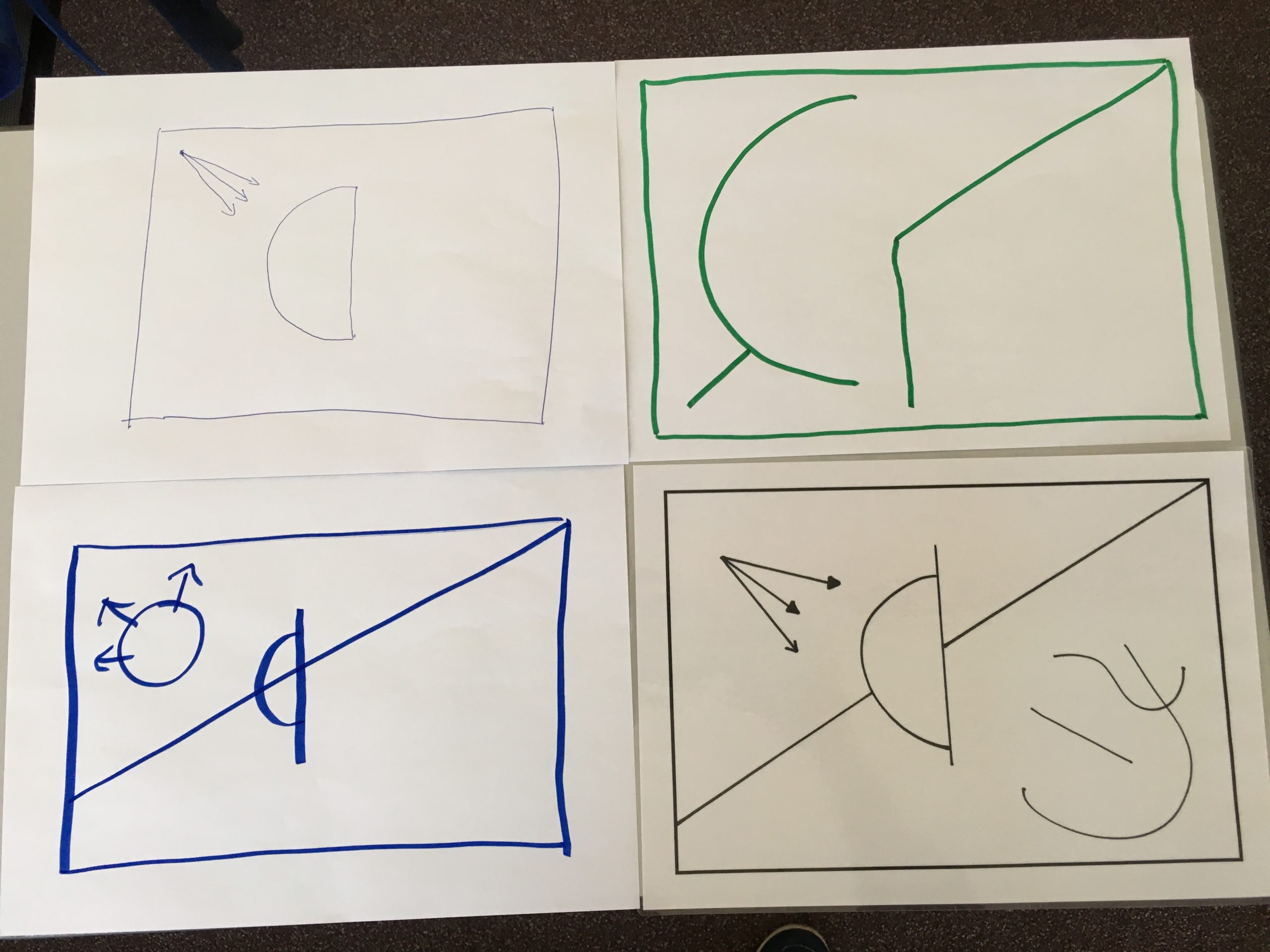
Débriefing du Round 1
Le Round 1 a pour objectif de montrer un mode de fonctionnement de type « Traditionnel » avec un fonctionnement en silo spécialisé, un mode de communication ponctuel et généralement un effet tunnel anxiogène pour les parties en aval.
Quelques éléments de débriefing supplémentaires :
Distance et Appartenance
Beaucoup d’équipes sont aujourd’hui délocalisées / distribuées et la contrainte de distance est souvent sous-évaluée. C’est dans ce premier tour que l’on peut voir en oeuvre le fameux proverbe « Loin des yeux, loin du coeur » car les Spécifieurs peuvent avoir tendance à oublier que le temps qu’ils utilisent pour les spécifications a un impact sur le temps collectif. Ainsi c’est le processus aval qui subit les actions du processus amont, et plus on est en aval, plus on subit !
On voit ici très bien la séparation des 2 groupes – d’un côté les Spécifieurs, de l’autre les Artistes – alors qu’ils font partie de la même équipe. Cela vous rappelle t’il quelque chose ? 😛
Tips de facilitation :
- Bien séparer physiquement et visuellement Spécifieurs et Artistes
- Sortir pour ne pas influencer les Spécifieurs par sa présence
Spécialisation
La spécialisation, en plus de l’isolation physique, fait que chacun peut avoir tendance à oublier que l’objectif est commun. Les Spécifieurs font de leur mieux pour pouvoir tout spécifier et les Artistes pour réaliser tout ce qui leur est fourni. Mais l’objectif n’est-il pas de livrer la plus grande valeur possible au client ? 🙂
Tips de facilitation :
- Penser à rappeler l’objectif aux Spécifieurs si aucun ne s’est déplacé aux alentours des 7-8 minutes
Nous <-> Eux
Le fameux « Nous <-> Eux » que je décris dans mon atelier « Traditionnel vs Agile » se ressent bien ici :
Côté Artistes :
- Lorsque le Spécifieur de l’autre équipe arrive et que le leur n’est toujours pas arrivé : « Mais qu’est ce qu’ils font !«
- Lorsque l’instruction ne leur est pas compréhensible : « Mais c’est pas clair ! »
Côté Spécifieurs :
- Lorsqu’ils reçoivent des questions sur des éléments qui leur apparaissaient pourtant clairs : « Ils ont rien compris ! »
Client
Le client est généralement ignoré dans cette partie. Il donne le dessin au départ, revient à la fin, et généralement n’est pas particulièrement satisfait de ce qui lui est proposé ! 😛
Tips de facilitation :
- En reprenant le rôle de client pour le débriefing du Round, vous pouvez marquer cette insatisfaction liée au résultat obtenu.
Communication
On peut voir certains Spécifieurs déposer leurs instructions sur le bureau des Artistes et s’en aller pour pouvoir recommencer à produire pour alimenter de nouveaux les Artistes. Comment interagir efficacement si l’une des parties n’est pas à l’écoute ou ne se met pas en situation pour pouvoir être à l’écoute ?
Ce Round souligne souvent un mode de communication unilatéral / descendant où les Spécifieurs transmettent une consigne et où les Artistes doivent exécuter rapidement. L’aspect bi-directionnel est très peu marqué.
Rétrospective Round 1
Après avoir expérimenté le premier Round de production, j’invite les équipes à prendre 5 minutes pour réfléchir à comment s’améliorer pour la prochaine fois. Je leur propose alors de suivre le cadre suivant :
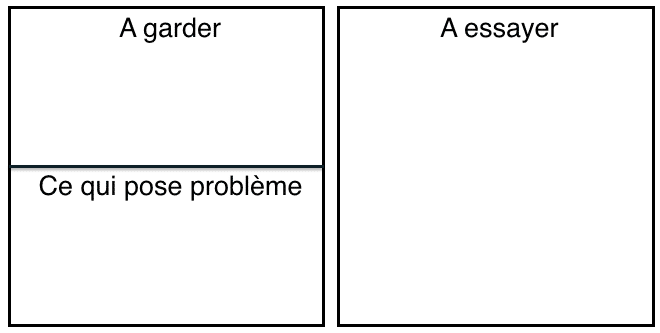
Note : Ce cadre est issu du Reflexion Workshop d’Alistair Cockburn.
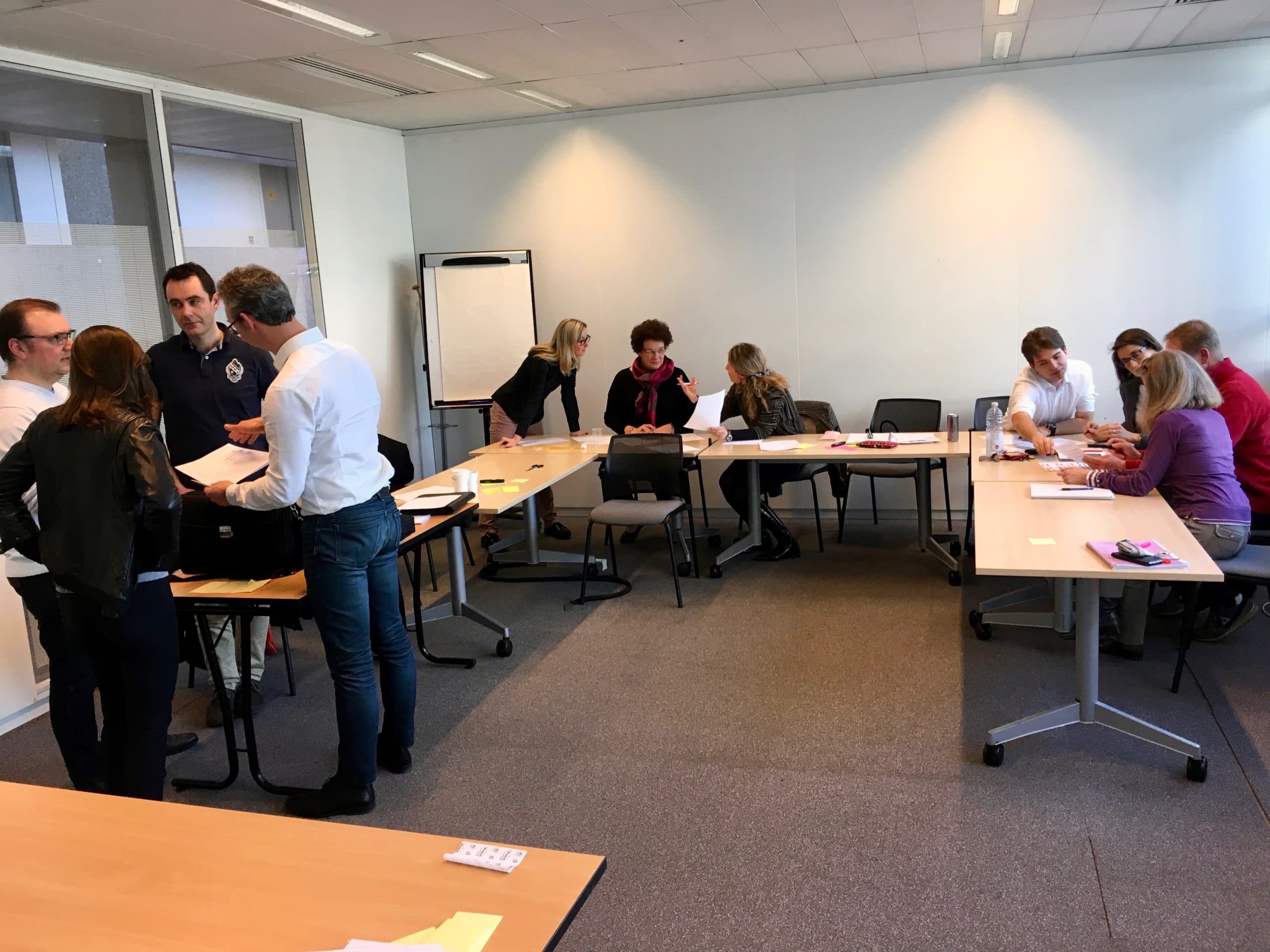
Après ces 5 minutes de réflexion entre co-équipiers, j’invite les équipes à partager leurs résultats en groupe complet en rappelant la fin de la première phrase du Manifeste Agile « …et en aidant les autres à le faire ». En effet, nous pouvons toujours nous inspirer des autres tout en gardant bien en tête que ce ne sont que des options supplémentaires. Libre à nous de les prendre ou de les laisser.
Les éléments qui émergent souvent de cette phase :
- Déclencher plus rapidement le premier aller-retour
- Faire plus d’allers-retours pour pouvoir traiter les potentielles questions
- Découper les instructions en plus petits morceaux, fonctionner en plus petits lots
- Décrire dans un premier temps une vision globale de ce qu’il y a à faire pour permettre de mieux comprendre les descriptions locales par la suite
- Définir un mode de communication partagé : commencer les phrases par des verbes d’action, utiliser des éléments de mesure, ordonnancer les instructions…
- Obtenir du feedback de validation au fur et à mesure
Tips de facilitation :
- Timeboxer cette partie est important pour garder une certaine cohérence dans l’atelier : je rappelle que la production ne durait que 10 minutes
- De plus, cela force les participants à aller au plus simple dans leur stratégie d’amélioration
- Faciliter les échanges lors du partage en groupe complet est nécessaire pour focaliser les participants car ils auront tendance à discuter entre les membres de leur équipe.
Round 2
J’invite les Artistes à retourner dans leur salle avant de projeter le prochain dessin :
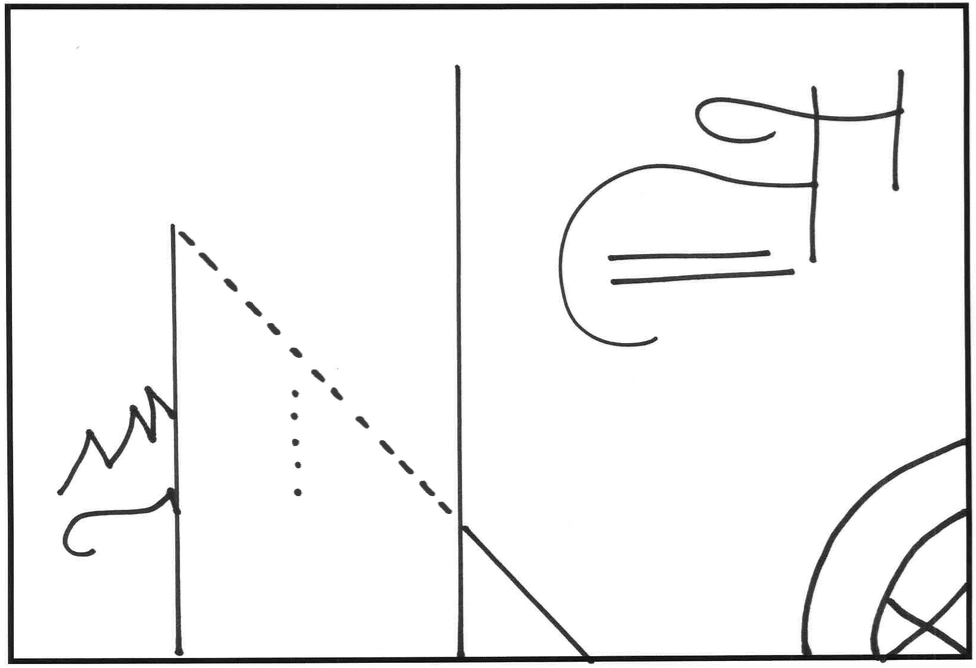
Il y a généralement quelques réactions à l’affichage de ce nouveau challenge, ce que je trouve toujours assez marrant ! 😈
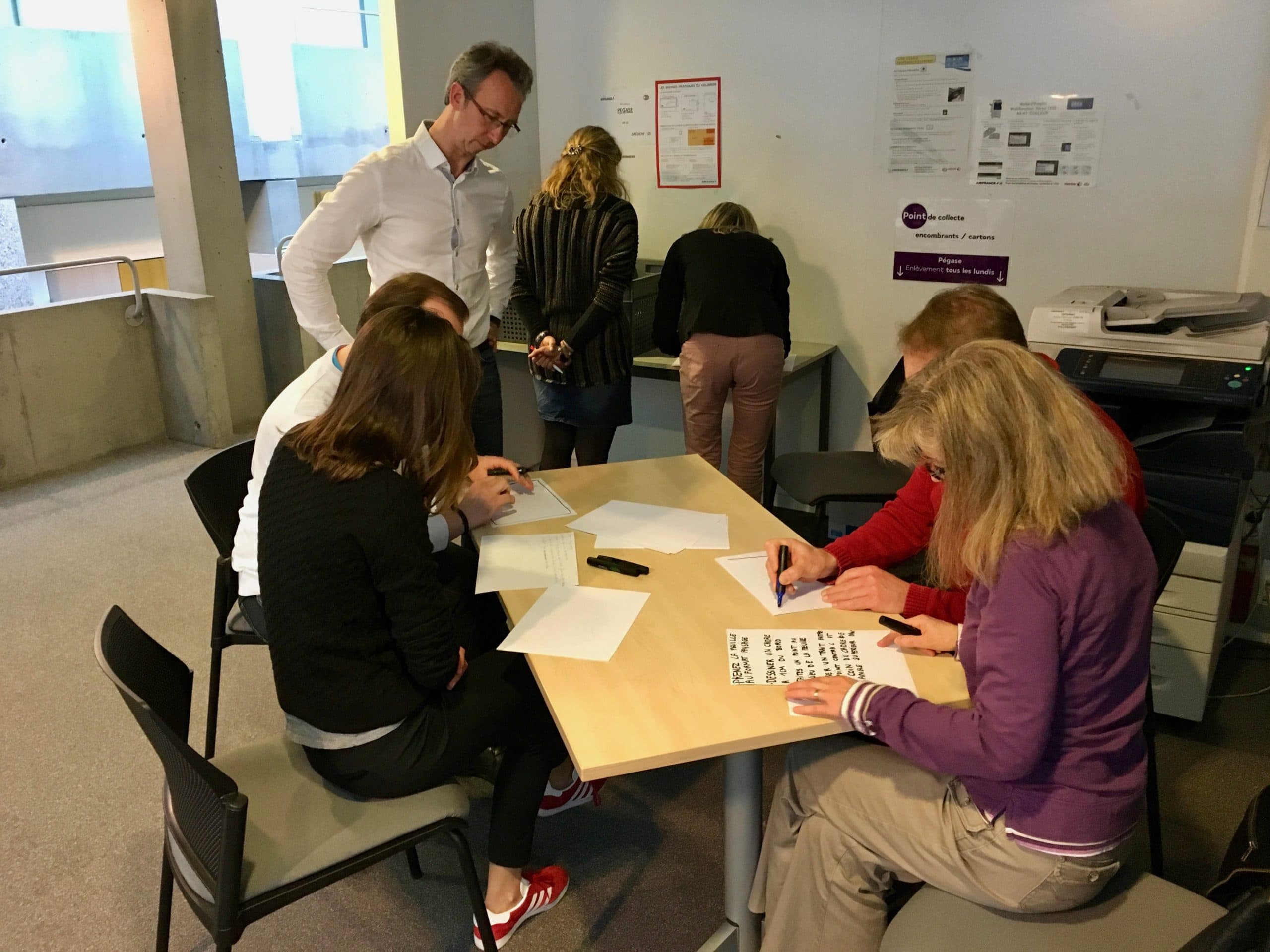
Le round 2 est plus mouvementé. Les premiers allers-retours arrivent souvent avant la fin de la première minute. Les portes s’ouvrent et se ferment plus souvent (si les participants sont dans des salles séparées). D’ailleurs, j’en profite moi-même pour mettre un peu de piment à l’expérience en m’assurant toujours que les portes soient bien fermées : si une porte reste ouverte, je la ferme discrètement.
Les allers-retours successifs donnent la possibilité aux Artistes de poser leurs questions. La communication va cette fois-ci bien dans les 2 sens et les Spécifieurs écrivent pour être compris et non plus pour rédiger une spécification. Le client n’est cependant pas plus sollicité qu’au Round 1.
Quelques résultats :
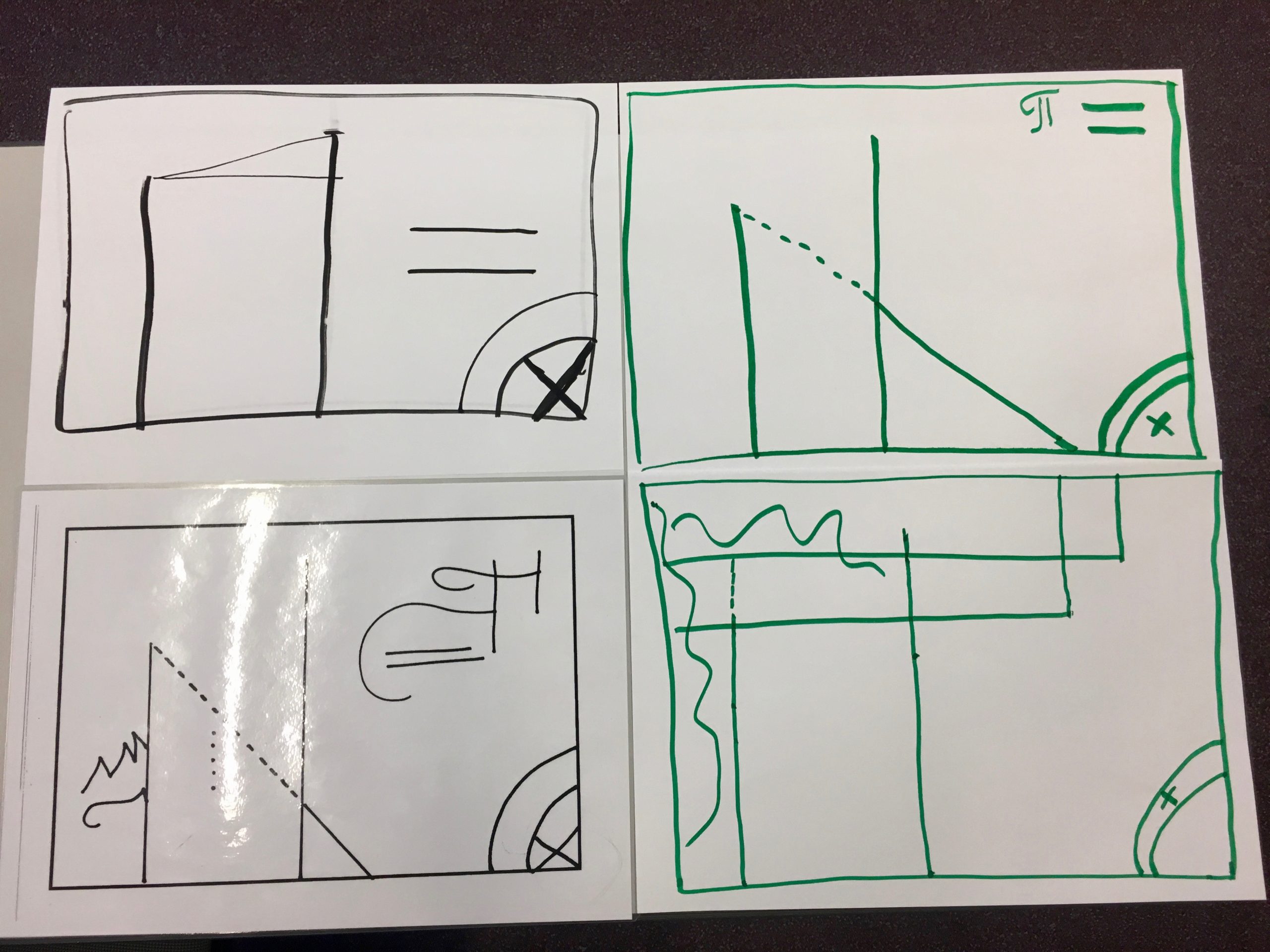
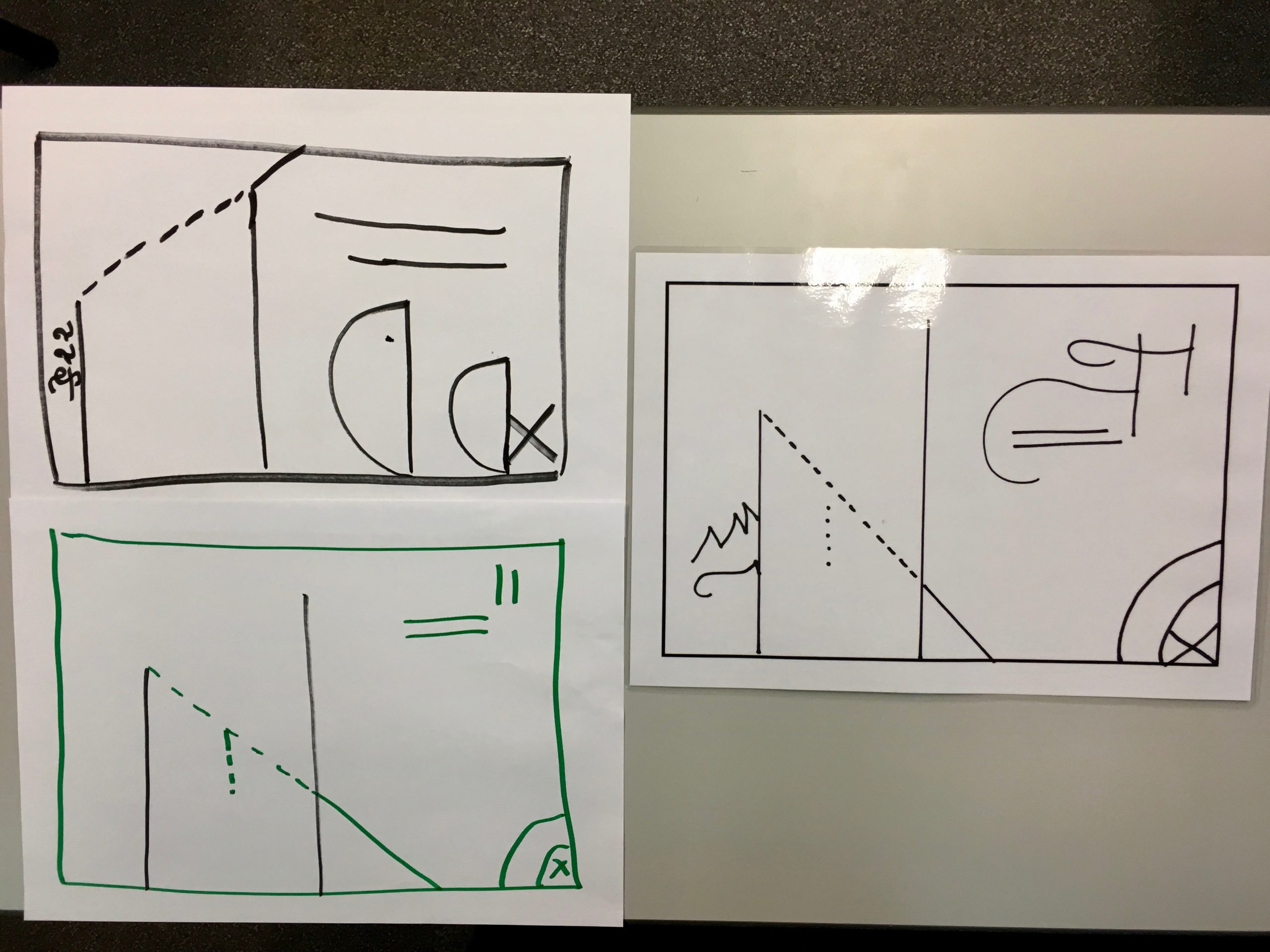
Débriefing du Round 2
Ce deuxième Round met en avant un fonctionnement en silos ouverts, c’est-à-dire que les silos existent toujours mais que les portes se sont ouvertes afin d’avoir une communication plus fluide.
Quelques éléments de débriefing supplémentaires :
Distance et Appartenance
Pour gérer la problématique de distance tout en maintenant les silos, les équipes mettent en place des allers-retours plus fréquents afin de rappeler la présence et l’appartenance à une même équipe. C’est ce que l’on tente de faire en entreprise en organisant de manière régulière des rencontres en face à face pour ne pas oublier qu’il y a bien des personnes en face et non pas juste des noms ou des identifiants ! 😛
Communication
Chacun est toujours dans son silo et reste donc spécialisé. Cependant, les Spécifieurs peuvent avoir tendance dans ce round à ne plus écrire pour écrire, mais s’assurent que la manière dont ils écrivent va être comprise par les Artistes.
On peut le voir sous différents aspects :
- La rétrospective peut avoir fait émergé une structure de communication partagée
- Les Artistes ont parfois un espace où ils déposent leurs questions et un autre où ils traitent les instructions
- Les Spécifieurs restent plus longtemps aux côtés des Artistes : au cas où il y ait des questions, pour voir comment ils perçoivent les messages reçus afin de mieux appréhender les incompréhensions et pour pouvoir valider ce qui a été produit par la suite
- Certains Spécifieurs, voyant une incompréhension se matérialiser sur le dessin, vont s’empresser de faire un aller-retour pour pouvoir le signaler aux Artistes : l’effort est donc mis en oeuvre pour le collectif
Les Spécifieurs, dû à leur contrainte du messager, sont ceux dont le changement de comportement est le plus observable. Ils sont souvent plus à l’écoute des Artistes pour pouvoir leur transmettre les bonnes informations au bon moment.
Coût de l’incompréhension
J’avais mis comme contrainte initiale le fait qu’un Spécifieur ne pouvait pas répondre directement, même à l’écrit, s’il se trouvait chez les Artistes. Il est donc obligé d’effectuer un aller-retour pour apporter sa réponse. Ceci est pour moi une manière de matérialiser le coût de l’incompréhension : faire un aller-retour supplémentaire c’est perdre du temps, et comme on le dit usuellement le temps c’est de l’argent ! 😛
En effet, les personnes peuvent avoir tendance à négliger le contenu de leurs messages. Je ne parle pas seulement de l’intonation qui peut être perçue au travers d’un message écrit mais bien de la pure incompréhension liée à une interprétation des mots qui sont écrits. Cela a bel et bien un coût, masqués malheureusement par la rapidité des moyens de communication d’aujourd’hui (emails, chats…).
« Portes » de silos
Je vous disais que je faisais bien attention à refermer les portes qui restaient ouvertes entre chaque allers-retours des participants, et il faut avouer qu’il y en a beaucoup ! 🙂
Je demande ainsi souvent en débriefing si les portes ont été facteur d’irritation pendant ce Round. Ce n’est pas toujours le cas, mais avec un peu de recul les participants se rendent souvent compte qu’ils avaient tendance à laisser la porte ouverte (que je m’empressais de refermer ! 👿 ), ce qui n’était pas le cas dans le Round 1.
Vous l’aurez probablement compris, mon intention initiale ici est de matérialiser de manière métaphorique ces fameuses portes qui font la séparation entre les silos. Lorsque l’on souhaite que la communication soit plus fluide, il est nécessaire de les laisser ouvertes sinon il y aura toujours un délai supplémentaire.
Priorisation et inclusion du client
Le client est souvent encore le grand oublié de ce Round malgré la complexité grandissante du dessin proposé.
- Vouloir tout faire même si c’est impossible
Lorsque vous avez vu le dessin demandé, est-ce que vous avez ne serait-ce qu’espéré pouvoir tout faire ?
La réponse est souvent unanime :
Non, mais on y va quand même !
- Ne pas aller négocier avec le client
Je trouve toujours cela surprenant de voir que même si la demande semble démesurée, la crainte d’aller voir le client pour négocier est très présente.
Lorsque je partage cela avec les participants, la réponse que je reçois est souvent : « Mais on avait le droit d’aller voir le client ? »
Je rappelle ici que les instructions de l’atelier définissaient un objectif et des contraintes, celle d’aller voir le client n’en faisait pas partie ! 😛
Note : A la décharge des participants, l’animation de cet atelier seul peut entrainer un flou. Est-ce que vous leur parlez en tant qu’animateur ou en tant que client ?
Tips de facilitation :
Prendre un objet (casquette, cravate…) pour rendre plus clair le rôle que vous jouez selon les périodes d’échanges.
- Prioriser selon ses propres critères
Il arrive souvent que par crainte d’aller demander au client, que les priorités soient faites selon nos propres critères. C’est ce que l’on voit la plupart du temps dans ce second Round.
J’en profite alors pour questionner les participants :
Sachant que vous n’alliez pas pouvoir tout faire, comment avez-vous sélectionné les éléments que vous alliez réaliser ?
=> On a choisi ce qui était le plus simple à faire pour nous !
Comment pouviez-vous savoir que ce que vous aviez choisi avait de la valeur pour le client ?
=> On n’en sait rien !
Comment auriez-vous pu faire pour le savoir ?
=> Demander au client !
Et la boucle est bouclée ! 😎
Round 3
Ce troisième Round est légèrement différent des 2 précédents. En effet, nous pourrions mettre la qualité des résultats obtenus sur le dos de la séparation physique et du manque de communication orale n’est-ce pas ? Eh bien remettons ces 2 éléments en place dans les équipes et voyons ce que cela va changer.
Ces caractéristiques changeant fondamentalement la dynamique du Round, j’ai décidé de ne pas faire de rétrospective à la fin du Round 2 car difficile de vraiment y capitaliser.
Je distribue ou projette ensuite le dernier dessin à réaliser :

Quelques réactions amusantes surviennent généralement à la vue de la photo. Je rappelle néanmoins que l’objectif reste le même : réaliser le projet le plus précisément possible et le livrer au client au bout des 10 minutes.
Suite au débriefing du Round 2, il peut arriver que des Spécifieurs ayant bien retenu la leçon viennent me voir en tant que client pour me demander de prioriser.
Si l’on me pose la question :
Qu’est-ce qui est important pour vous dans ce dessin ?
je réponds naturellement :
Tout
N’est-ce donc pas ce que ferait un client ? 😛
Je les aide tout de même en leur demandant de changer leur question :
Qu’est-ce que vous souhaiteriez avoir en premier, en deuxième, en troisième… ?
En effet, ce qui importe est véritablement l’ordonnancement des priorités métiers ce qui donne bien une co-responsabilité du projet aux différentes parties – y compris le client.
Je réponds alors :
- Le gros bloc au centre est primordial pour moi
- Le personnage sur le rocher sur le côté
Je peux parfois rajouter que mon besoin initial était d’avoir un paysage avec une vue en perspective : la vision d’un objet particulièrement grand (le gros rocher) par rapport à un autre plus petit (le personnage).
Après quelques minutes, j’ai tendance à me rapprocher des équipes qui étaient venues me voir au tout départ pour voir où elles en sont.
En tant qu’animateur, je leur demande :
Comment pouvez-vous savoir que ce que vous avez réalisé correspond bien à ce que le client souhaite ?
=> On lui montre et on lui demande !
Ça y est je radote ! 😛
Effectivement, les habitudes sont difficiles à changer et je partage souvent à ce moment un postulat :
Les utilisateurs savent seulement ce qu’ils veulent une fois après avoir vu une première version du produit
– Principe d’incertitude des exigences d’Humphrey
Dit autrement :
Le client ne sait ce qu’il veut que lorsqu’il le voit
J’en profite alors pour aller un petit peu plus loin dans l’expérimentation et leur dit :
Maintenant que je vois ce que vous avez réalisé, je me dis que ma vision initiale n’était peut-être pas adéquate – un peu trop aride, sèche – alors que je suis plutôt quelqu’un d’optimiste ! J’aimerais avoir un paysage qui représenterait plus la vie, dans lequel on pourrait se perdre pour rêver ! 🙂
Pourriez-vous me rajouter un peu de nature ? Des arbres, de la végétation… voire même des animaux ?
Note : Parfois je demande également de changer l’emplacement du personnage pour le mettre sur le côté gauche ! 😛
Généralement, les participants laissent libre court à leur créativité à ce moment là et se tisse une relation plus détendue entre eux (l’équipe de réalisation) et moi (le client). Je leur laisse d’ailleurs la liberté de réaliser ce qu’ils veulent dans le sens où j’ai confiance qu’ils ont compris mon besoin.
C’est lorsque le débriefing arrive et que je montre les résultats que les autres participants sont particulièrement surpris ! 😛
Quelques résultats :
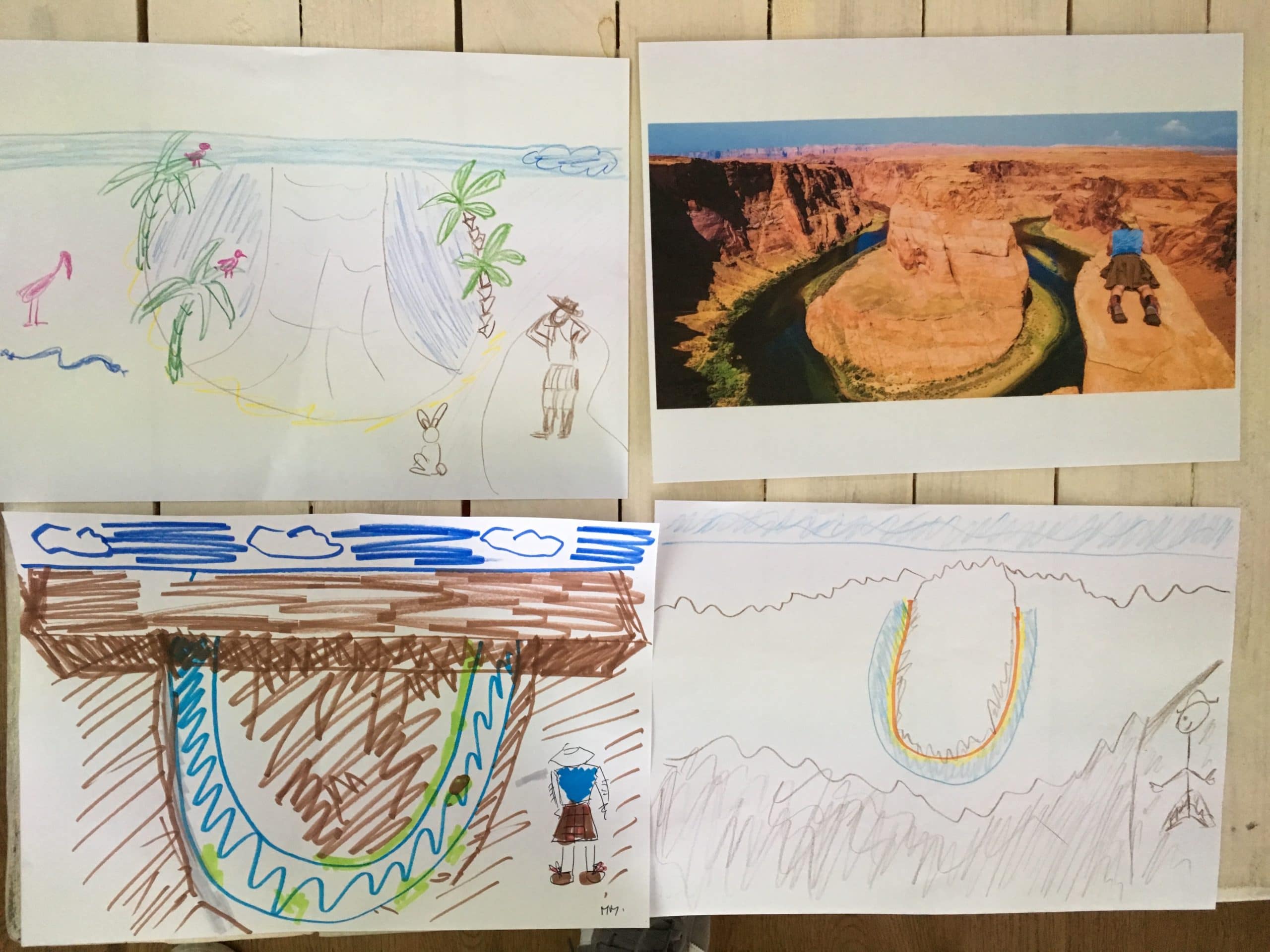
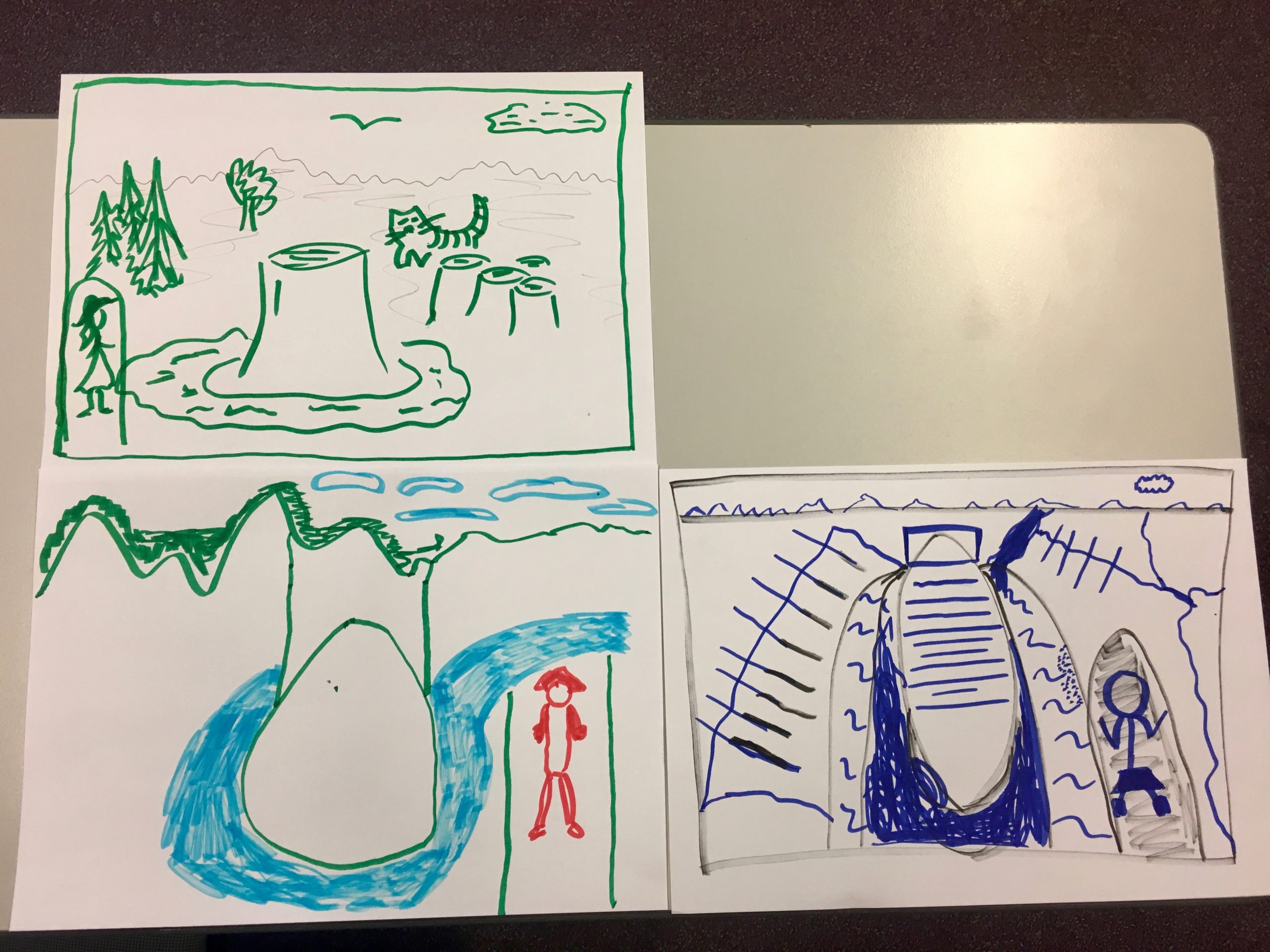
Débriefing du Round 3
Relation client – fournisseur
On peut voir dans ce Round une relation qui passe de « client – fournisseur » ou « je te dis ce que je veux et toi tu le fais » à une relation de partenariat « je te dis ce que je pense vouloir et nous allons avancer ensemble dans le budget imparti (temps, effort) ».
Le fait de rester proche permet de tisser un lien différent : le client est inclus dans la démarche de réalisation et il a dans le même temps une certaine responsabilité dans le résultat. Il n’y a donc que peu de surprises. La négociation devient plus naturelle tout en restant dans le respect des contraintes de chacun.
Besoin statique vs dynamique
On peut voir une différence dans les démarches mises en oeuvre :
Approche Traditionnelle :
- Même s’il y a potentiellement une demande de priorisation du client en début de Round, cette priorité n’est pas remise en question par la suite
- Le résultat n’est pas montré / livré au client avant la fin du temps imparti
- Pas de relation avec le client en dehors de la première rencontre, pas de négociation
- Une réponse au besoin initial : un risque de ne pas être en ligne avec le besoin à l’instant de la livraison
Approche Agile :
- Demande de priorisation initiale du client
- Demande de validation / feedback sur ce qui a été produit : ce qui entraine un mode de production itératif et incrémental
- Une prise en compte dynamique des changements par l’apprentissage du client sur son besoin : ce qui garantit la probabilité de satisfaction client à la livraison
- Une négociation permanente avec le client pour challenger le besoin et le mettre en relation avec l’effort de mise en oeuvre
Limites de la communication orale
Un des objectifs de ce Round est également de montrer que malgré le rapprochement physique et la communication orale, cela ne suffit pas si la complexité du projet est trop grande. Il y a donc une nécessité de s’outiller afin de pouvoir mieux se comprendre, expérimenter et valider : prototypage, dessins sur tableau blanc, modélisations….
Liens avec les 12 principes Agile

Je disais qu’initialement cet atelier était une manière pour moi d’introduire les principes Agile autrement qu’en les passant un à un. Cependant, j’ai tendance à passer rapidement dessus après coup mais en rappelant des moments de l’activité.
Voici quelques ouvertures :
Notre plus haute priorité est de satisfaire le client en livrant rapidement et régulièrement des fonctionnalités à grande valeur ajoutée.
- Satisfaire le client : toute l’activité est centrée autour de la satisfaction du client même si son rôle ne devient vraiment visible qu’en fin de Round 2
- Livrer rapidement : la notion de livraison rapide intervient lorsque les participants se rendent compte que le premier aller-retour doit intervenir tôt pour ne pas être pris en défaut par le temps
- Livrer régulièrement : la notion de régularité peut intervenir au Round 3 lorsque les productions sont présentées au fur et à mesure au client pour s’assurer que cela répond bien toujours à son besoin
- Grande valeur ajoutée : la notion de valeur ajoutée intervient lorsque l’on parle de priorisation. C’est donc au Round 3 principalement que cela est mis en exergue lors des échanges avec le client
Accueillez positivement les changements de besoins, même tard dans le projet. Les processus Agiles exploitent le changement pour donner un avantage compétitif au client.
- Accueillir les changements de besoins : la manifestation la plus flagrante est au Round 3 lors des échanges avec le client qui met à jour sa vision par rapport à ce qu’il va apprendre de son besoin
Livrez fréquemment un logiciel opérationnel avec des cycles de quelques semaines à quelques mois et une préférence pour les plus courts.
- Logiciel opérationnel : la seule allusion à un produit ou à une « fonctionnalité » terminée intervient au Round 3 lorsque les participants montrent une partie de la demande client.
- Cycles courts : on le voit surtout au Round 2 lorsque les allers-retours participants se voient plus nombreux. Les échangent entre Spécifieurs et Artistes sont donc plus rapprochés.
Les utilisateurs ou leurs représentants et les développeurs doivent travailler ensemble quotidiennement tout au long du projet.
- Travailler ensemble quotidiennement : le Round 2 montre déjà un mode de travail régulier entre les différentes parties de la chaîne, avec des boucles de feedback régulières. Cependant, c’est seulement au Round 3 que cette boucle de feedback va bien jusqu’au bout, c’est-à-dire jusqu’au client final !
Réalisez les projets avec des personnes motivées. Fournissez-leur l’environnement et le soutien dont ils ont besoin et faites-leur confiance pour atteindre les objectifs fixés.
- Personnes motivées : les personnes qui participent à l’atelier sont généralement en formation ce qui fait qu’elles sont donc dans un mindset généralement « motivé » pour apprendre
- Fournir un environnement : le cadre de l’atelier est fait pour créer un environnement bienveillant
- Faire confiance : en tant qu’animateur et en tant que client, je n’émets aucun doute sur le fait que les participants sont capables d’atteindre les objectifs. Ils vont faire des erreurs sur le chemin, mais tout cela n’est fait que pour leur apprentissage.
Note : ce principe est donc rempli surtout par le cadre de l’atelier selon moi.
La méthode la plus simple et la plus efficace pour transmettre de l’information à l’équipe de développement et à l’intérieur de celle-ci est le dialogue en face à face.
- Dialogue en face à face : c’est la contrainte principale qui est mise sur les participants. Ils se rendent généralement compte que c’est bien plus facile lorsque l’on peut échanger en face à face dans le Round 3 même si la complexité du dessin est beaucoup plus grande.
Un logiciel opérationnel est la principale mesure d’avancement.
- Mesure d’avancement : il n’y a pas tellement de notion de mesure dans l’atelier. Cependant, le rapprochement peut être fait dans le Round 3 lorsque les participants avancent avec les validations du client. En effet, ces validations successives garantissent la véritable avancée du projet – ainsi que la satisfaction client – avec la prise en compte dynamique des changements. Les autres équipent avancent dans le noir jusqu’à livrer un produit qui répond bien au besoin initial mais plus au besoin courant.
Les processus Agiles encouragent un rythme de développement soutenable. Ensemble, les commanditaires, les développeurs et les utilisateurs devraient être capables de maintenir indéfiniment un rythme constant.
- Rythme soutenable : je pense que ce principe est surtout rempli par le cadre de l’atelier. Les rythmes de production sont de 10 minutes.
Une attention continue à l’excellence technique et à une bonne conception renforce l’Agilité.
- Bonne conception et Excellence technique : on ne met pas ici en avant la qualité technique des dessins mais surtout leur adéquation à la demande initiale. Certains participants peuvent néanmoins faire des prototypes de demandes – faire des dessins rapides sur une feuille à part par exemple plutôt que directement sur leur dessin final – ce qui leur permet d’éviter de devoir tout recommencer si erreur. Ce cas pour moi peut faire lien avec une nécessité de socle technique stable pour soutenir les changements de besoin.
La simplicité – c’est-à-dire l’art de minimiser la quantité de travail inutile – est essentielle.
- Simplicité : On peut voir ce principe à tous les niveaux. Le rythme de production imposé implique d’aller à l’essentiel, la rétrospective permet de simplifier la communication et les échanges, la priorisation permet de simplifier la demande initiale.
Les meilleures architectures, spécifications et conceptions émergent d’équipes auto-organisées.
- Auto-organisation : l’atelier a défini un objectif et des contraintes ce qui définit le cadre de liberté dans lequel les équipes peuvent en toute sécurité prendre des initiatives. Nous sommes donc bien dans un mode de fonctionnement auto-organisé pendant tout l’atelier.
À intervalles réguliers, l’équipe réfléchit aux moyens de devenir plus efficace, puis règle et modifie son comportement en conséquence.
- Réfléchir pour devenir plus efficace : les participants pratiquent ce principe lors de la rétrospective de fin de Round 1.
Conclusion

Artistes et Spécifieurs n’est pas un incontournable pour rien : c’est un atelier très complet qui permet d’expérimenter les principes Agile de manière ludique et fun !
J’ai d’ailleurs souvent autant de plaisir à l’animer que les participants à le vivre, ce qui est pour moi un excellent indicateur ! Selon le temps et l’intention que vous avez, cet atelier vous donne de la flexibilité dans le debriefing et vous permet ainsi de mettre en avant les apprentissages qui vous semblent les plus pertinents.
Je vous le recommande donc vivement ! :-







5 réponses
Bonjour Olivier,
Merci pour ce post très interessant je connaissais ce jeu, mais pas avec les mêmes images décrites. Je trouve ton jeu d’image plus pertinent, je l’ai donc adopté. Par contre je n’ai pas trouvé de référence sur « Principe d’incertitude des exigences d’Humphrey » indique dans le 3ième Round.
Aurais-tu des références à transmettre ?
merci
Bonjour Olivier,
Merci d’avoir pris la peine de rédiger le déroulement de cet exercice pour le partager. Ta description est très précise, progressive et synthétique. C’est très utile de pouvoir comparer la manière dont tu le déploies avec la façon dont je l’utilise, cela va me permettre d’ajuster mon approche.
Bonne continuation
Bonjour Olivier,
Aujourd’hui je fournis une ardoise blanche pour illustrer le principe n°9.
Cela leur permet d’avoir un environnement de dev.
L’environnement de production étant une seule feuille blanche (en plus c’est écoresponsable).
– Sur quel environnement demandons-nous la validation client ?
– les erreurs en dév sont moins coûteuses qu’en production
– Il faut prévoir la partie déploiement
– Evidemment ce qui est en développement au bout des 10 minutes ne compte pas (Mesure de l’avancement : Seul ce qui est fini compte et non ce qui est commencé)
Merci à toi pour ton travail et ton partage